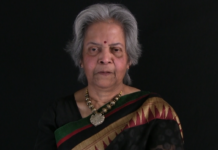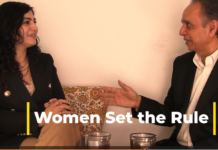By Khushbu Jain
Streaming at home remains the favourite entertainment activity across generations. To cater to this demand, unimaginable content is being produced and streamed on OTT Platforms and this has led to a raging debate across the globe on content censorship in the OTT space.
India has been in the centre of this debate. The regulation of this space will shift the sands of the media and entertainment landscape.
With Covid restrictions, theatrical releases were limited and this led to traditional production houses turning to OTT platforms. The convenience an OTT platform provides to its audience has led to an exponential increase in the time spent by individuals viewing streaming content online. It is only natural therefore that the attention of lawmakers has turned to OTT platforms.
Unlike television broadcasting in India, which is governed under The Cable Networks Television (Regulation) Act, 1995, and the exhibition of movies, which is regulated by the Cinematograph Act, 1952, which provides for certification of movies before they can be exhibited, online content is not bound by any specific provision governing the availability of content on an OTT platform. Nonetheless, such content is subject to certain existing laws and rules, such as:
Indian Penal Code, 1860: Any person who indulges in the activities of selling and distributing any work of literature which is obscene can be punished under Section 293, so can a person who has the intention of outraging religious sentiments with malice under Section 295A. Releasing defamatory content is punishable under Section 499 and when a person insults the modesty of a woman, he is liable for punishment under Section 354.
Indecent Representation of Women (Prevention) Act, 1986: This law explicitly prohibits the indecent representation of women in advertisements, movies, books and online content.
Information Technology Act, 2000: Publishing or transmitting material containing sexually explicit acts, etc., in electronic form is punishable under Section 67A. Publishing or transmitting material depicting children in sexually explicit acts, etc., in electronic form is punishable under Section 67B. The Government under Section 69A has the power to block public access to such material.
Protection of Children from Sexual Offences (POCSO) Act: Its provisions can be invoked to protect children from both online and offline offences. This is one of the key pieces of legislation that ensures the protection of children from various offences, including online harassment and web pornography.
Article 19(1) of the Constitution guarantees the freedom of speech and expression to all, but this right is subject to restrictions spelt out in Article 19(2) in the interests of the sovereignty and integrity of the country, the security of the State, friendly relations with foreign states, public order, decency or morality, and in relation to contempt of court, defamation or incitement to an offence.
As provisions of the Cinematograph Act, 1952, are applicable to films meant for release in theatres and not to the ones that are transmitted through the medium of the Internet, any certifications of a film by the CBFC does not apply to content streamed on OTT platforms.
These platforms, as a result, have enjoyed complete freedom unlike traditional cinema and this has led to numerous instances where complaints have been filed on the grounds of obscenity, hurting religious sentiments, child pornography, so on and so forth, hence the to regulate this space.
This was also observed by the Supreme Court while hearing a plea filed by Amazon. “Traditional film viewing has become obsolete,” the honourable court opined. “People watching films on these platforms has become common. Should there not be some screening? We feel there should be some screening… At times they are showing pornography too.”
The court stated that a certain degree of screening of content was necessary before films or web series are streamed into the homes of the public at large.
To address this matter, the Ministry of Information and Broadcasting consulted several stakeholders on forms of regulation of OTT platforms to make the sector more efficient. At the end of these consultations, the Government issued the Information Technology (Guidelines for Intermediaries and Digital Media Ethics Code) Rules, 2021 (‘IT Rules’), which lays down the following guidelines for the intermediaries, including OTT platforms, to follow under Information Technology Act:
(a) OTT platforms are required to self-categorise content into five age-based categories: U (Universal), U/A-7, U/A-13, U/A-16 and A (Adult).
(b) A parental lock needs to be provided by OTT platforms.
(c) Digital media will also have to follow the Norms of Journalistic Conduct of the Press Council of India and the Programme Code under the Cable Television Networks Regulation Act.
(d) They have to establish a three-level grievance redressal mechanism, where the first level is self-regulation by OTT platforms; second-level is self-regulation by the self-regulating bodies of publishers; and the third level is an oversight mechanism.
(e) It provides for the appointment of a redressal officer based in India to address public grievances within 15 days.
(f) It calls for an additional self-regulatory body of publishers of not more than six members and a retired judge of the Supreme Court or a High Court, or an eminent person.
With OTT platforms becoming collectively one of the largest media markets in the world, they are subject to the regulation of the state they exist in. Controlling Internet space or OTT platforms is not an easy task for any authority as the Internet space is not completely controlled by any country, except in China and North Korea.
Nations around the world are in the process of bringing regulation into the OTT space. Australia, for instance, has appointed an eSafety Commissioner for digital media and OTT content, which are regulated by The Broadcasting Services Act, 1992. The Act lays down detailed guidelines, provides for a complaint mechanism, and has a “refused classification” for prohibited content.
The increase in streaming content consumption by the Indian audience has also led to a huge increase in the number of OTT platforms launched in the country to cater to the diverse sensibilities of the Indian audience, making India the fastest-growing OTT market in the world. It has also triggered a great deal of controversy, with a number of Indian and foreign shows being dragged into disputes over issues such as pornography, defamation and insulting religious sentiments, and so on.
Despite the absence of any OTT-specific regulations, a slew of cases have been filed against streaming platforms and this has posed a speedbreaker for OTT platforms. Apart from content removal notices, the platforms have been subject to litigation across states.
Many of the OTT players, being of foreign origin, are not acquainted with the laws of the land on matters such as defamation, hate speech, national security, cultural insensitivity, political compulsions, and so on, and the absence of specific legislation dealing with OTT platforms creates an unfavourable environment.
There is therefore a need to put together a well-defined comprehensive legislation to tackle these issues in a way that will provide a safe environment for viewers and a level playing field for the platforms to flourish and prosper.
(Khushbu Jain is a practicing advocate in the Supreme Court and founding partner of the law firm Ark Legal. She can be contacted on Twitter: @advocatekhushbu) (IANS)














